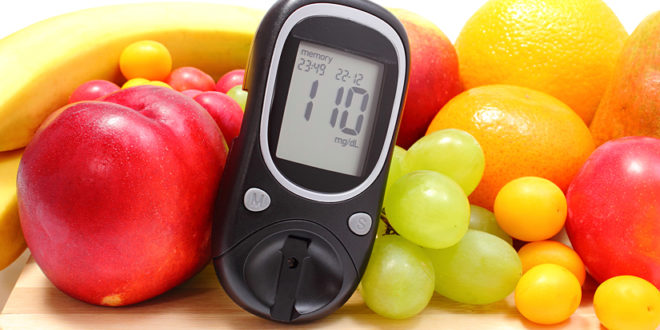Diabetes mellitus is a condition that prevents the body from regulating the amount of sugar (glucose) in the blood. There are two common types of diabetes. There is Type 1, previously known as insulin dependent diabetes, and Type 2, previously known as non-insulin dependent diabetes.1
Type 1 Diabetes
Typically, Type 1 diabetes begins in childhood. It once was common only in childhood but now can occur at any age, especially in people under 402 . It is believed to be an autoimmune disease causing the body’s immune system to attack the cells of the pancreas, shutting down its ability to produce insulin. Insulin is necessary for the proper regulation and use of glucose. Also, Type 1 diabetes is more common in men than women and rarely found in people of Asian descent.
Type 2 Diabetes
More than 90% of people with diabetes have Type 2 diabetes. Type 2 diabetes has strong genetic links and usually runs in families. It creates a situation where the body cells resist the entrance of glucose, leaving large amounts of blood sugar floating around in the blood, instead of nourishing the cells. This excess glucose (hyperglycemia) in the blood is harmful to the body organs. It damages the retina of the eye, the kidneys, the nerves and the blood vessels over a long period of time. In recent years, Type 2 diabetes is increasing in children and adolescents. Also it remains the main type of diabetes in adults.3 Type 2 diabetes generally occurs between the ages of 50-55 when people are getting older and fatter.
Symptoms of Diabetes
The usual and suspect symptoms of diabetes 1 and 2 are: excessive thirst, excessive appetite, and frequent urination. Other symptoms are unexplained weight loss, fatigue, poor wound healing, frequent infections, altered mental state and blurry vision.
Causes of Diabetes
Surprisingly, sugar intake is not the main culprit in Type 2 diabetes. Studies show that fat consumption and large amounts of body fat are the significant disease contributors. Type 2 diabetes is rarely found in countries where the diet is low fat with low rates of obesity. However, you are at greater risk for Type 2 if you have:
- High blood pressure
- High blood triglyceride (fat) levels
- Gestational diabetes or giving birth to a baby weighing more than 9 pounds
- High-fat diet
- High alcohol intake
- Sedentary lifestyle
- Obesity problems
The resistance of the cells to insulin appears to relate directly to obesity and to excess fat in the diet and possibly in the liver.
Dietary Changes
Dietary changes are the most effective diabetes treatment. A healthy meal plan includes a large variety of foods including low fat proteins, vegetables, fruits, and complex carbohydrates. In addition to a variety of foods, eating smaller portions of all foods is essential. Too much food, even if healthy foods, adds excess calories and prevents a person from reaching a healthy weight.4
Reduce Fat Intake
Lower amounts of fat, grease and oil in the daily diet become extremely important. This will increase the cells’ sensitivity to insulin, allowing the glucose to better enter the cells in Type 2 diabetes. Lowering the daily fat intake to 10% of total daily calories can often improve blood sugar levels to normal range in approximately 8 – 10 weeks. In addition, high fiber foods are also very important for normalizing spikes that can occur in blood sugar while stabilizing energy levels as well. Avoiding refined foods, drinks, and snacks which are low in fiber but high in calories is also very helpful.
Exercise and Drugs
Physical exercise is essential to burning up the excess blood sugar and fatty acids in the blood. A regular exercise routine of 20 minutes minimum of walking, three times per week has proven to be very beneficial in reducing blood sugar levels. Also exercise will also help to reduce obesity, which is a critical component of lifestyle management for Type 2 diabetes.
Alcohol and smoking are dangerous for diabetics. No more than seven drinks in a week or two to three in an evening should be consumed. Smoking increases the risks for diabetic complications. If at all possible, eliminate these things from your lifestyle.
Insulin Treatment
People with Type 1 diabetes require insulin treatment for life or until pancreatic transplants are available. Until then a balanced diet of protein, high fiber starchy carbohydrates, fresh fruits and vegetables along with a little fat will reduce the amount of insulin necessary. This diet will help to stabilize blood sugar levels.
Diabetic Complications
To protect oneself from diabetic complications, the patient should have their eyes checked at least once a year for diabetic retinopathy. They should also have a urine check at least twice a year for protein in the urine, which can lead to kidney failure. In addition, they should check their cholesterol and blood pressure levels to avoid heart disease, and check for nerve sensitivity in the feet and cuts or blisters in the feet.
Test Your Knowledge
Take the Quiz: Managing Diabetes
This short quiz tests your knowledge on the material you have read regarding Managing Diabetes. If you have not read it yet, we suggest that you do so before taking the quiz.
If you liked this, you may also enjoy Warning Signs of Diabetes | How to Manage Diabetes
End Notes
1. www.journal.diabetes.org/clinicaldiabetes/V17N41999/pg146.htm
2. www.emedicine.medscape.com/article/919999-overview
3. www.emedicine.medscape.com/article/919999-overview
4. www.diabetes.org/food-and-fitness/food/planning-meals/diabetes-meal-plans-and-a-healthy-diet.html
 Answers for Me Support & encouragement for every-day life
Answers for Me Support & encouragement for every-day life




